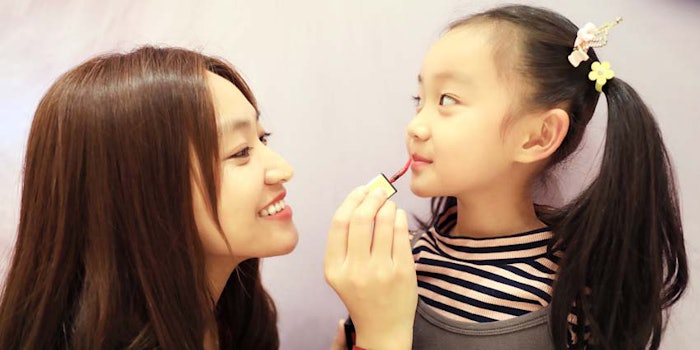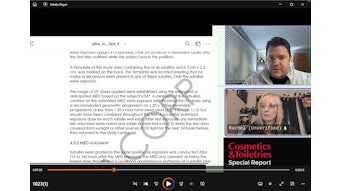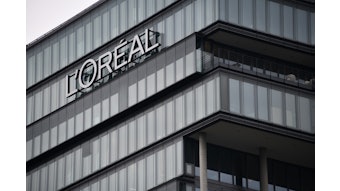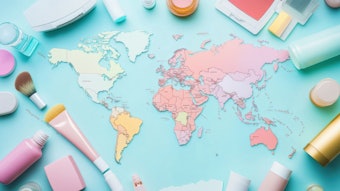
Editor's note: Following the June 2021 Asia-Pacific Regulatory Update published in Cosmetics & Toiletries, Angelita Hu, of ChemLinked, provides this look at recent changes in China's cosmetic regulations. While the previous update covered the Asia-Pacific region from late 2020 through early 2021, here Hu focuses on China, from March through August 2021.
China introduced a series of new and key regulations, indicating the full implementation of its new cosmetic regulatory framework. Following are brief updates.
See related: Asia Update; Label and Claim Rules, CBD, Microbeads, Naturals and Men's Cosmetics
Cosmetic Pre-market Approval System Introduced
On May 1, 2021, China formally implemented a new cosmetic and new cosmetic ingredients (NCI) pre-market approval system by putting seven crucial regulations into effect. The seven regulations include:
- Administrative Measures on Cosmetics Registration and Notification: This regulation is primarily designed to specify the basic requirements for the administration of cosmetic and new cosmetic ingredient pre-market approval, such as the procedures of registration and notification, the obligations of registrants and notifiers, etc.
- Provisions for Management of Cosmetic Registration and Notification Dossiers: This regulation details the documentation requirements for the application, modification, renewal and cancellation of cosmetic registration/notification. More importantly, it specifies that imported general cosmetics can be exempted from animal testing from May 1, 2021, under certain conditions.
- Provisions for Management of New Cosmetic Ingredient Registration and Notification Dossiers: This regulation details the requirements for registration dossiers for high-risk NCI, notification dossiers for low-risk NCI and NCI's safety status report. It also specifies that data from animal testing alternative method for NCI registration/notification can be conditionally accepted.
- Cosmetic Classification Rules and Catalogs: This regulation specifies that a coding system will be adopted for the classification of cosmetics. The system has five layers: efficacy claim, application area, target user, dosage form and application method.
- Standards for Cosmetic Efficacy Claim Evaluation: This regulation clarifies the efficacy claims that require efficacy evaluation and lists requirements for evaluation test methods and reports, evaluation institutions and evaluation abstracts.
- Technical Guidelines for Cosmetic Safety Assessment 2021: This regulation clarifies the detailed requirements for conducting safety assessments, qualification for safety assessors and the content necessary in the assessment reports.
- Inventory of Existing Cosmetic Ingredients in China 2021: The IECIC 2021 includes a total number of 8,972 existing cosmetic ingredients in China.
Starting from May 1, 2021, cosmetic companies must submit their application dossiers for cosmetic and new cosmetic ingredient registration and notification in accordance with the seven regulations.
Imported general cosmetics can be exempted from animal testing from May 1, 2021, under certain conditions.
Amended Cosmetic Prohibited Ingredient Inventories
On May 28, 2021, China's National Medical Products Administration (NMPA) released and implemented the finalized Inventory of Prohibited Ingredients for Cosmetics and Inventory of Prohibited Plant (Animal) Ingredients for Cosmetics. From the implementation date, cosmetic registrants and notifiers are not allowed to produce or import products containing prohibited ingredients stipulated in the new inventories.
The main amendments include adding 24 prohibited ingredients, amending the names and CAS numbers of prohibited ingredients, and classifying and merging prohibited drug ingredients. Among the 24 newly prohibited ingredients, CBD and three other Cannabis sativa-derived ingredients are included, which means CBD cosmetics are prohibited from being produced and imported in China.
Finalized Requirements for Cosmetic Labeling
On June 3, 2021, China's National Medical Products Administration (NMPA) released the finalized Administrative Measures on Cosmetics Labeling. The measures spell out the requirements for the labeling and prohibited claims of cosmetics (including cosmetics provided to consumers in trial, gift, exchange, etc., forms) under China's new cosmetic regulations.
As per the measures, cosmetic labels shall bear the following information:
- Chinese product name and special cosmetic registration certificate number;
- The name and address of registrant or notifier;
- The name and address of manufacturing enterprise;
- The product executive standard number;
- Full ingredients listing;
- Net content;
- Durability;
- Application method;
- Necessary safety warnings; and
- Other content prescribed by laws, administrative regulations and mandatory national standards.
The measures are scheduled to be implemented on May 1, 2022. Starting from the implementation date, all cosmetics to be registered or notified shall comply with these measures. For cosmetics that have been registered or notified before May 1, 2022, but do not comply with the measures, the registrants or notifiers must update the labels by May 1, 2023.
CBD cosmetics are prohibited from being produced and imported in China.
Regulations on Children's Cosmetics
On June 18, 2021, China's NMPA released the draft Supervision and Administration Provisions on Children Cosmetics for public consultation. The draft introduces stricter requirements for children's cosmetics, including the use of ingredient, safety assessment, packaging design, production and operation, registration and notification, and post-market surveillance.
Noteworthy points include:
- Children's cosmetics are not allowed to use functional ingredients for freckle-removing, whitening, anti-acne, depilating, deodorant, anti-dandruff, anti-hair loss, hair dyeing and hair perming agents. If the above ingredients are used for other purposes, the necessity and safety of their use in children's cosmetics should be accessed.
- Stakeholders are required to submit toxicological testing reports and safety assessment reports during registration and notification of children's cosmetics, meaning that animal testing is still mandatory for children's cosmetics.
- Children's cosmetics should be labeled with the NMPA designated children's cosmetics’ logo in a prominent position on the display surface, and the executive standard number directly below the logo.
- The technical review of children's cosmetics notification documents is retained, focusing on production safety documents. Products with non-compliant documents will be disposed severely.
- The NMPA will formulate guidelines specifically for the review of special children's cosmetics and strictly review the registration documents according to the guidelines.
Stakeholders are required to submit toxicological and safety assessment reports for children's cosmetics, meaning animal testing is still mandatory for these products.
Regulations on Cosmetics Manufacturing and Operations
Finally, on Aug. 2, 2021, China's State Administration for Market Regulation released the finalized Supervision and Administration Measures on Cosmetics Manufacture and Operation, which will come into force on Jan. 1, 2022.
The measures consists of seven chapters with 66 provisions, detailing cosmetic manufacturing and operation management. Highlights include:
- Optimizing production license management system;
- Refining and clarifying the production management requirements;
- Refining and clarifying the operation management requirements; and
- Strengthening the supervisory responsibilities of the administration department.
In addition, detailed requirements have been made for issues of concern, such as the responsibilities and qualification requirements for the person in charge of quality and safety, the requirements for operators in e-commerce platforms, etc.
It should be noting that these measures are more applicable for domestic cosmetic companies rather than international companies.
See related: China Issues Standards for Cosmetics Safety and Efficacy Claims










